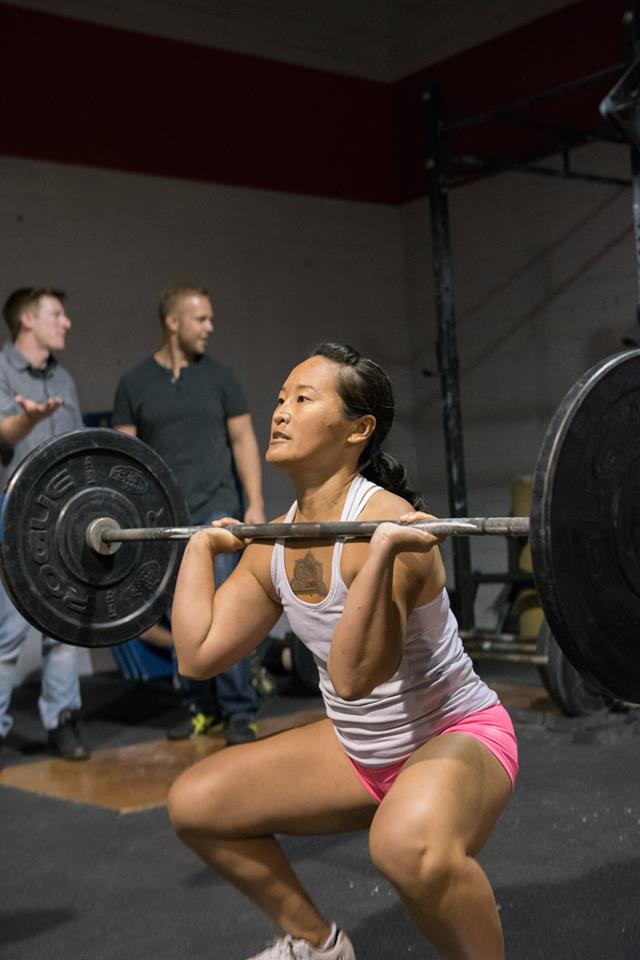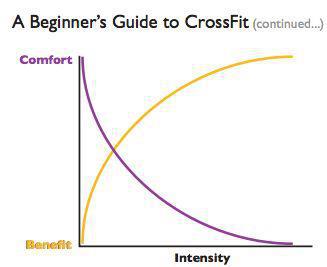Comfortable Being Uncomfortable
Written by Kim McLaughlin
“Get comfortable being uncomfortable.”
This is a common phrase that can be heard in CrossFit gyms across the country. For me, as a competitive athlete, the phrase makes sense. In the heat of competition, I know things are going to be hard. I know my muscles are going to burn. I know it’s going to be hard to breathe. I know I’m not going to be comfortable trying to work out faster, harder, or longer than my competitors. Getting comfortable being uncomfortable directly translates to my goals in the sport of CrossFit. I know I need to approach all of my workouts (or try to at least) as if it was a competition. Practice like you play – get comfortable being uncomfortable. It makes sense.
But what if your goal ISN’T to compete? Why do YOU need to get comfortable being uncomfortable? What if your goal is to just stay healthy? Isn’t the fact that you come in every day enough? You’re moving…why push it? Why is it important for you to be uncomfortable in your own workouts?
To answer that question, you may have to revisit the original reason you joined the CrossFit community. Did you want to get fit? Look better naked? Become the next Rich Froning? Regardless of the wording of your actual goal, most of us found CrossFit because we were looking for something that would get us results, some sort of change in our current routine. But, like anything in life, it’s what you put into it that is going to directly effect what you get out of it. Walking into a CrossFit gym and simply going through the motions of a workout is not going to yield the results you’re looking for. If you’re constantly working at the same rate and doing the same movements, it’s going to yield the same results.
This idea of pushing personal limits to an uncomfortable level is the very foundation of what we strive do in the gym every day regardless of whether you’re a competitive athlete or not. CrossFit is actually defined as “constantly varied, high intensity, functional movements.” [1] You cannot have one part without the other if you want the program to be effective. All of the parts work hand in hand to get the results we are looking for. Lucky for us, Invictus takes care of two of the three of these components. There is little to no thinking involved. The programming we see every day covers the “constantly varied” and “functional movements” parts of the magic elixir. Our job is to just add the “high intensity” part – the uncomfortable part.
So what does it mean to be uncomfortable? It does not mean that we need to be puking after every workout or that we should try to hit PRs that are not practical given what we have done in the past (i.e. – adding 50 pounds to the bar at a time). What I mean by “uncomfortable” is pushing for one more rep when all you want to do is drop the bar and rest. Uncomfortable can mean going for another strict pull-up even though it might mean you fail. Uncomfortable is aiming to keep your rowing pace under 2:00 in a 1000 meter row even though you’ll be a bit out of breath when you get off the rower for the next movement. It simply means continuing to move faster and go heavier even when you don’t want to.
In one of Greg Glassman’s (the founder of CrossFit) articles in the CrossFit Journal he nails this idea on the head, “Intensity and results are directly proportional, but intensity and comfort are inversely proportional. Choosing for greater intensity is choosing for more fitness, but also greater personal sacrifice in the form of discomfort.” [1] If you want to see any change, you have to learn to push it. The very foundation of CrossFit is built on being comfortable being uncomfortable. That’s what gets results.
So why should you get comfortable with being uncomfortable? Because success is not a goal, it’s bi-product. It turns out that being uncomfortable is what gets results.
References
[1] http://journal.crossfit.com/2004/10/a-beginners-guide-to-crossfit.tpl

